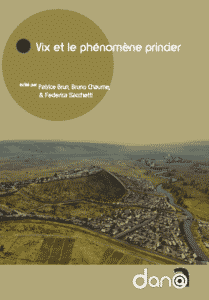UN@ est une plateforme d'édition de livres numériques pour les presses universitaires de Nouvelle-Aquitaine
Auteur : Biba Teržan

Filozofska fakultetaOddelek za arheologijo
Univerza v Ljubljani
Aškerčeva 2
SLO – 1000 Ljubljana
ljubinka.terzan@ff.uni-lj.si

Univerza v Ljubljani
Aškerčeva 2
SLO – 1000 Ljubljana
ljubinka.terzan@ff.uni-lj.si

Biba Teržan is D. Archaeol. Sc., Professor of Prehistoric Archaeology, Faculty of Arts and Sciences, University of Ljubljana, Institute of Archaeology of the Freie Universität Berlin. Associate Member since June 7, 2001, Full Member since June 1, 2007.

par Biba Teržan
This paper presents an overview of recent research in the hinterland of the northern Adriatic area, reaching as far as the south-eastern Alpine region and the Pannonian plain. During the Early Iron Age, the varied geography of the region was reflected in its cultural variety, expressed through both settlement patterns and burial rites. At the beginning of the Early Iron Age, several new cultural groups or ethnic entities developed in the region; these are partly based on the traditions of the preceding Urnfield culture, while to some extent they evolve under the influence of incomers and a new military ideology, spreading from the Pontus region to the Atlantic Ocean and known under the term “Hallstatt culture”. These cultural groups differ in their way of life and have different settlement types and patterns as well as diverse defensive systems, burial rites and practices (cremation vs inhumation, flat cemeteries vs barrow cemeteries, etc.). They possess a varied material culture, different attires and costume, weapons, and status symbols; in short, they clearly differ in their identity. The main characteristics of the three most important and best researched cultural groups in the area will be discussed in this perspective: first, the Sv. Lucija/St Lucia or Posočje group, then the Dolenjska or Lower Carniola group, and finally the Štajerska or Styrian-Pannonian group, which is also known as the Kleinklein, Martijanec or Kaptol group. Other groups from the region, for example the Notranjska-Kras group, will be mentioned only briefly when making comparisons between groups. The development of these groups took place from their formative phase between the ninth and eighth century BC to their heyday, mostly in the seventh and sixth centuries BC. As for their decline, their timing varies, for different reasons, partly because of the invasions of the Scythians and their allies in the sixth century BC, and partly because of the Celtic invasions in the fourth and third centuries BC, which were followed by the spread of the La Tène culture.

